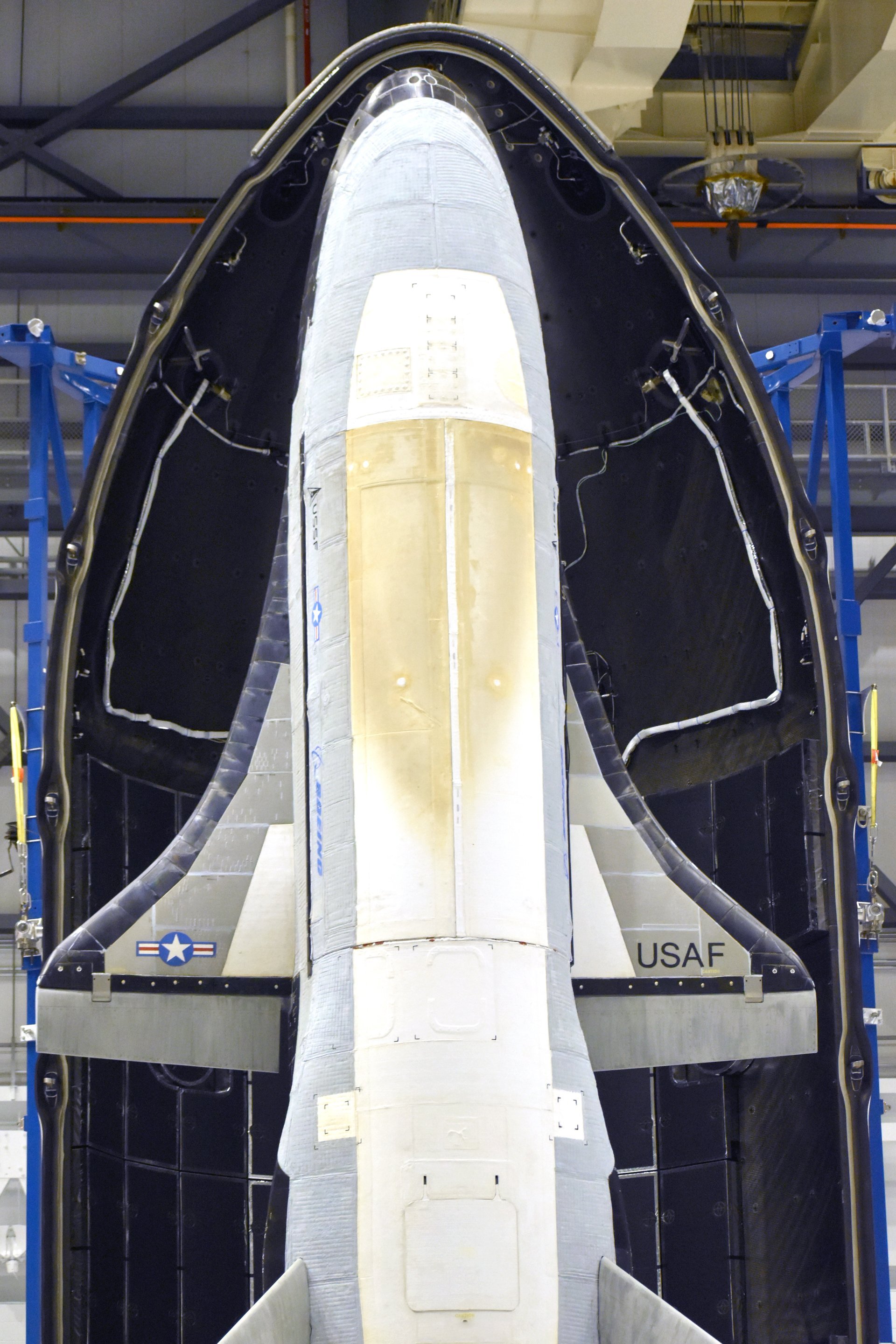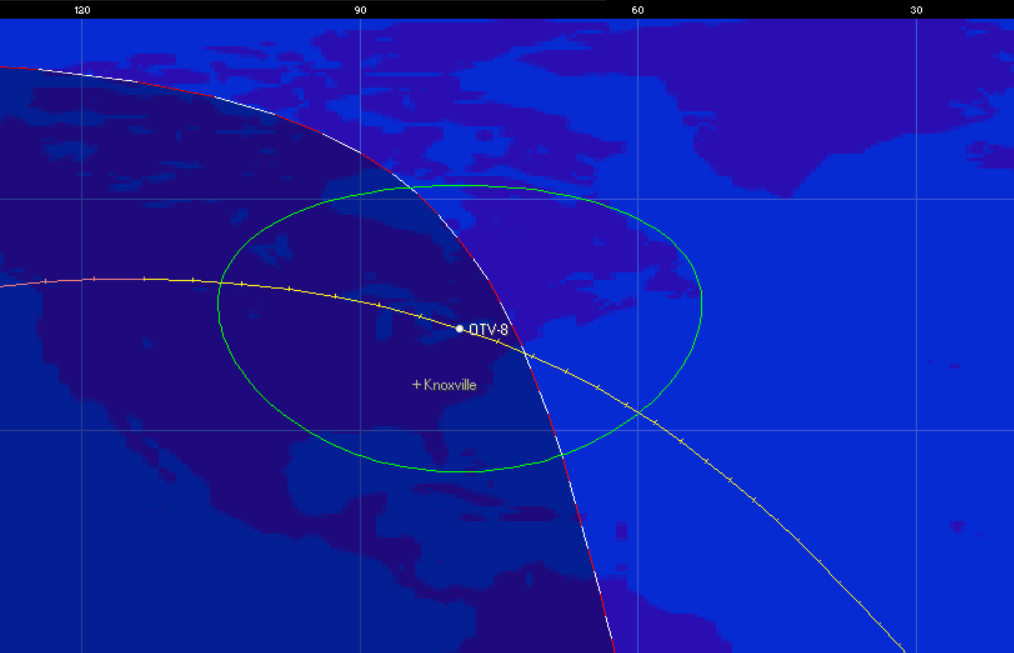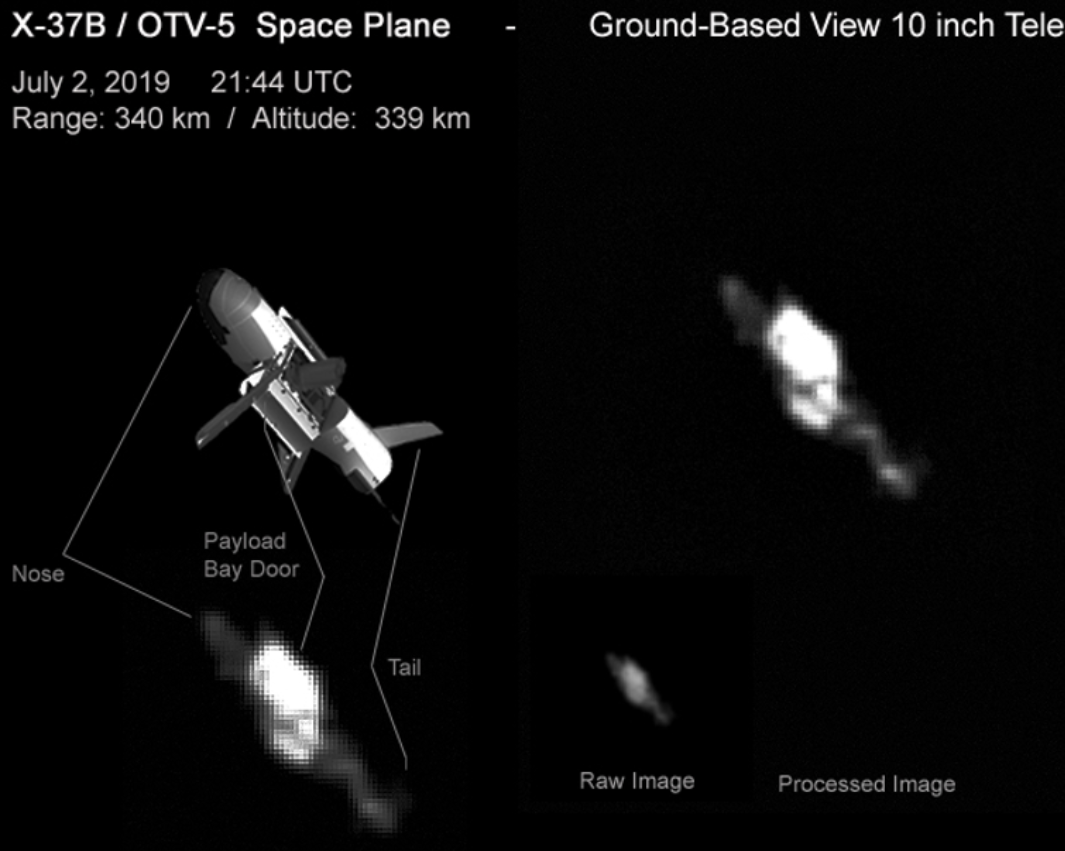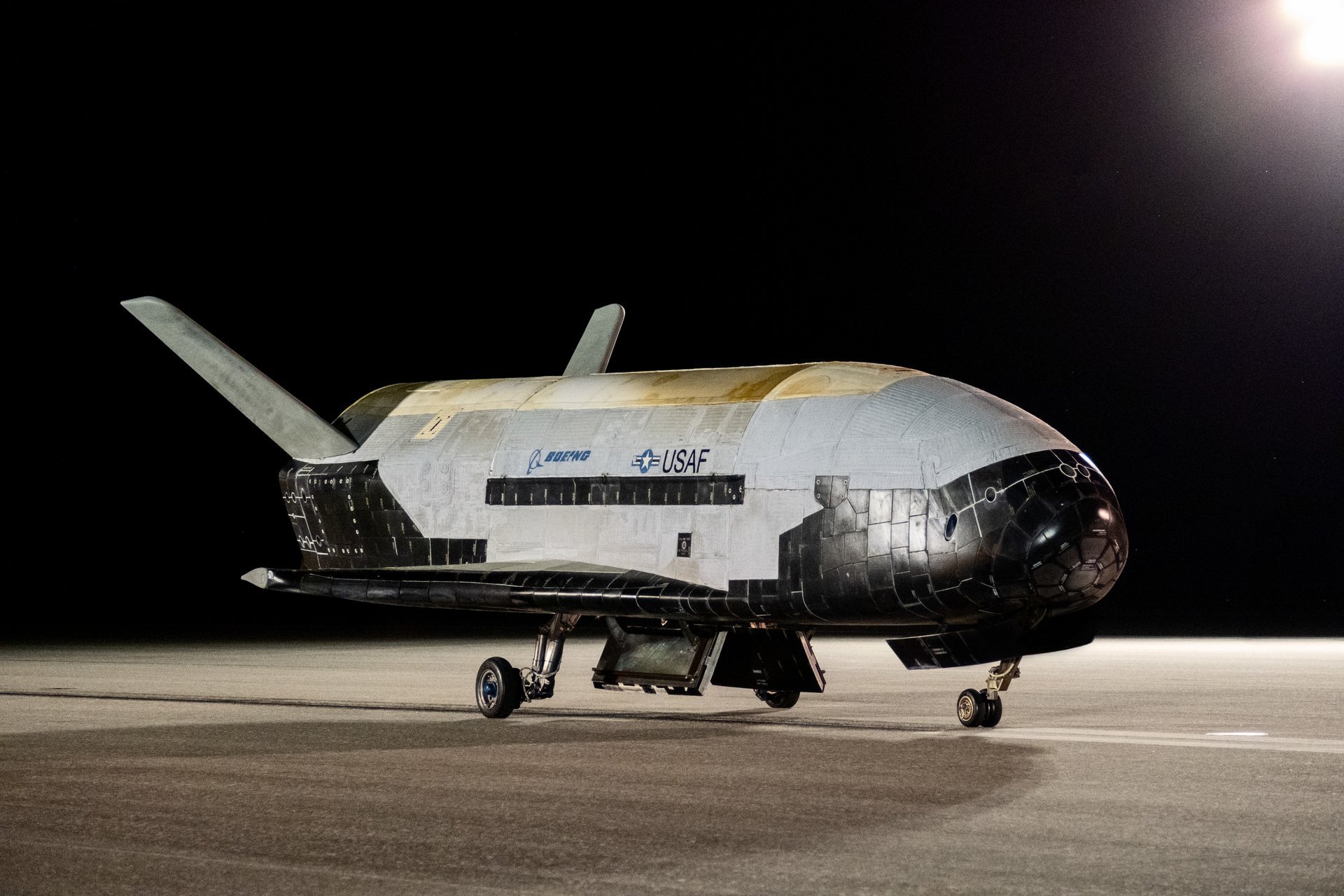The U.S. Department of Defense’s mini-shuttle heads to orbit once again Thursday night.
The hunt will be on shortly, to once again recover a clandestine mission in low Earth orbit.
SpaceX is set to launch a Falcon-9 rocket from launch pad LC-39A at the Kennedy Space Center Thursday night August 21st, with the classified USSF-36 mission. The U.S. Space Force has announced that this is the eighth mission for its fleet of two Orbital Test Vehicles (OTV-8). This is the automated ‘mini-space shuttle’ about the size of a large SUV, that launches like a rocket, and lands like a plane.
The four hour launch window opens at 11:40 PM EDT/(3:40 Universal Time on the 22nd) and should put on a good show for the Florida Space Coast. As is always the case with classified payloads, the U.S. DoD is mum concerning its orbital destination, but published NOTAM warnings for the launch suggest it’s targeting a 49.5 degree inclination in low Earth orbit.
The X-37B has proven to be a versatile platform in the past, targeting an HEO (highly elliptical) orbit on OTV-7, and remaining in orbit a record 780 days on OTV-5. The X-37B offers a key advantage to the U.S. DoD, as payloads can be swapped out on successive missions. China also has its own version which has thus far competed three orbital missions, and India is developing its own version, the TDV (Technology Development Vehicle). The record for the first automated shuttle flight goes to the late Soviet Union’s Buran, which completed one orbit (its only flight) on November 15th, 1988.
External views of the X-37B. Credit: Wikimedia Commons/Giuseppe De Chiara/CCA 3.0 license.
Much of what the mission does in orbit is secret, though Space Force has announced that OTV-8 will test inter-satellite laser communications and quantum inertial sensor technology in space. Both capabilities could prove handy in the event of a network or GPS outage during a conflict, and could also be employed in a Moon or Mars-based orbital satellite network.
 OTV-8 prior to encapsulation. Credit: U.S. Space Force.
OTV-8 prior to encapsulation. Credit: U.S. Space Force.
The good news is, following OTV-8 in orbit should be pretty straight-forward this time around. You just need to know where and when to look. Space-Track won’t publish elements for the mission, but Heavens-Above will likely put up a link to spotting OTV-8 in the past (they’ve done so before for previous missions). Preliminary TLEs provided by Marco Langbroek suggest a series of good passes of OTV-8 on the mornings after launch, including this one on the morning of August 23rd around 6:38 AM EDT:
 The potential pass of OTV-8 for Saturday morning. Credit: Orbitron.
The potential pass of OTV-8 for Saturday morning. Credit: Orbitron.
Expect OTV-8 to appear as a fast-moving +2nd magnitude ‘star’ on a zenith pass. “OTV missions maneuver a lot (orbit raising and lowering)” says Marco Langbroek, who wrote an in-depth analysis of the upcoming OTV-8 mission. “So on any given pass it can be early or late with respect to predictions if it has just maneuvered.”
 Images of a previous OTV mission in orbit. Credit: Ralf Vandeberg.
Images of a previous OTV mission in orbit. Credit: Ralf Vandeberg.
Satwatchers provide a valuable volunteer service tracking clandestine missions in orbit. Not only can they refute claims that secret missions were ‘lost’ after launch (it has happened before)… but they can also document tests of reconnaissance and anti-satellite capabilities, as one satellite approaches another.
Good luck and clear skies on your quest to spot OTV-8 on its latest clandestine mission in Earth orbit.
